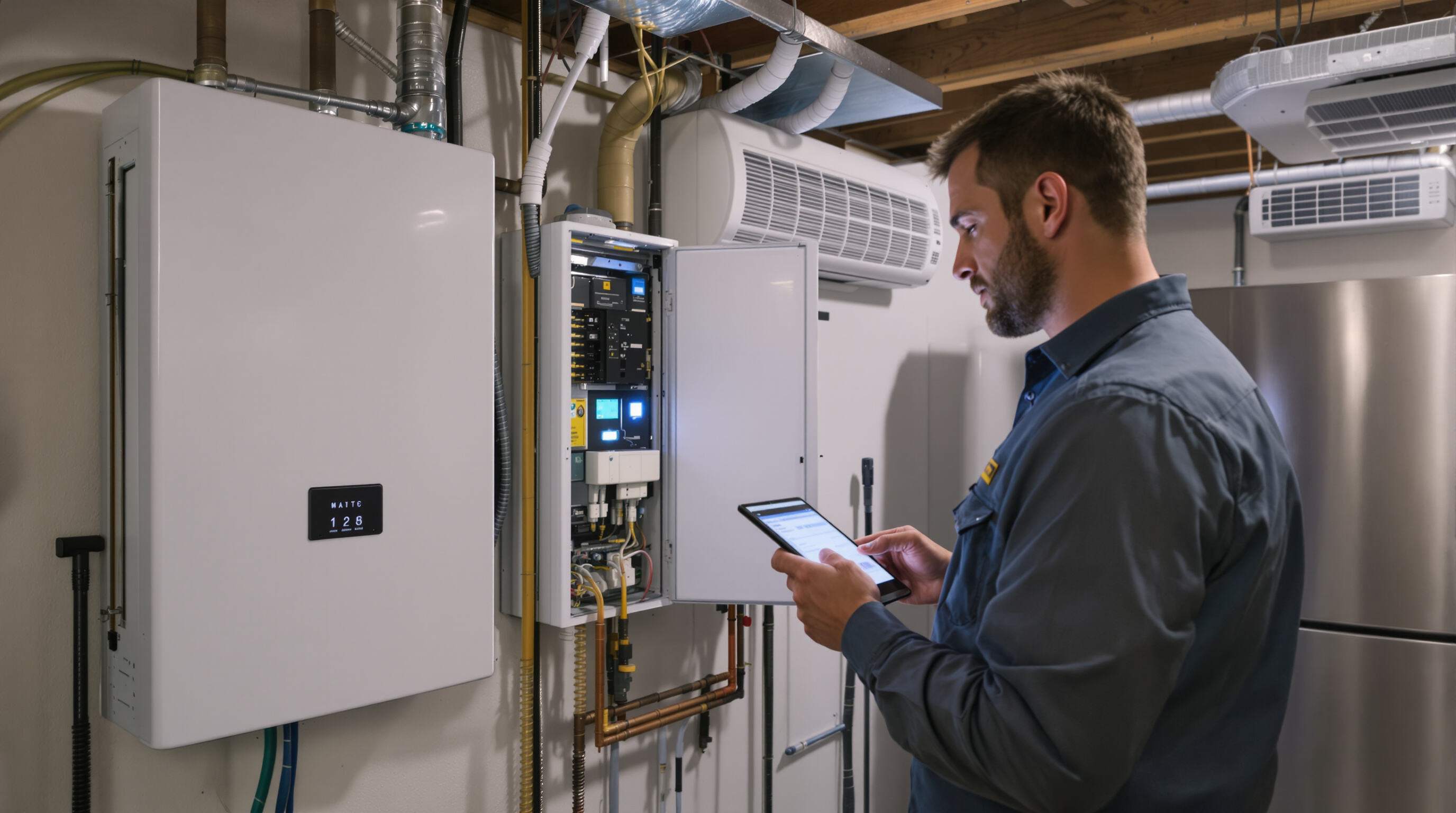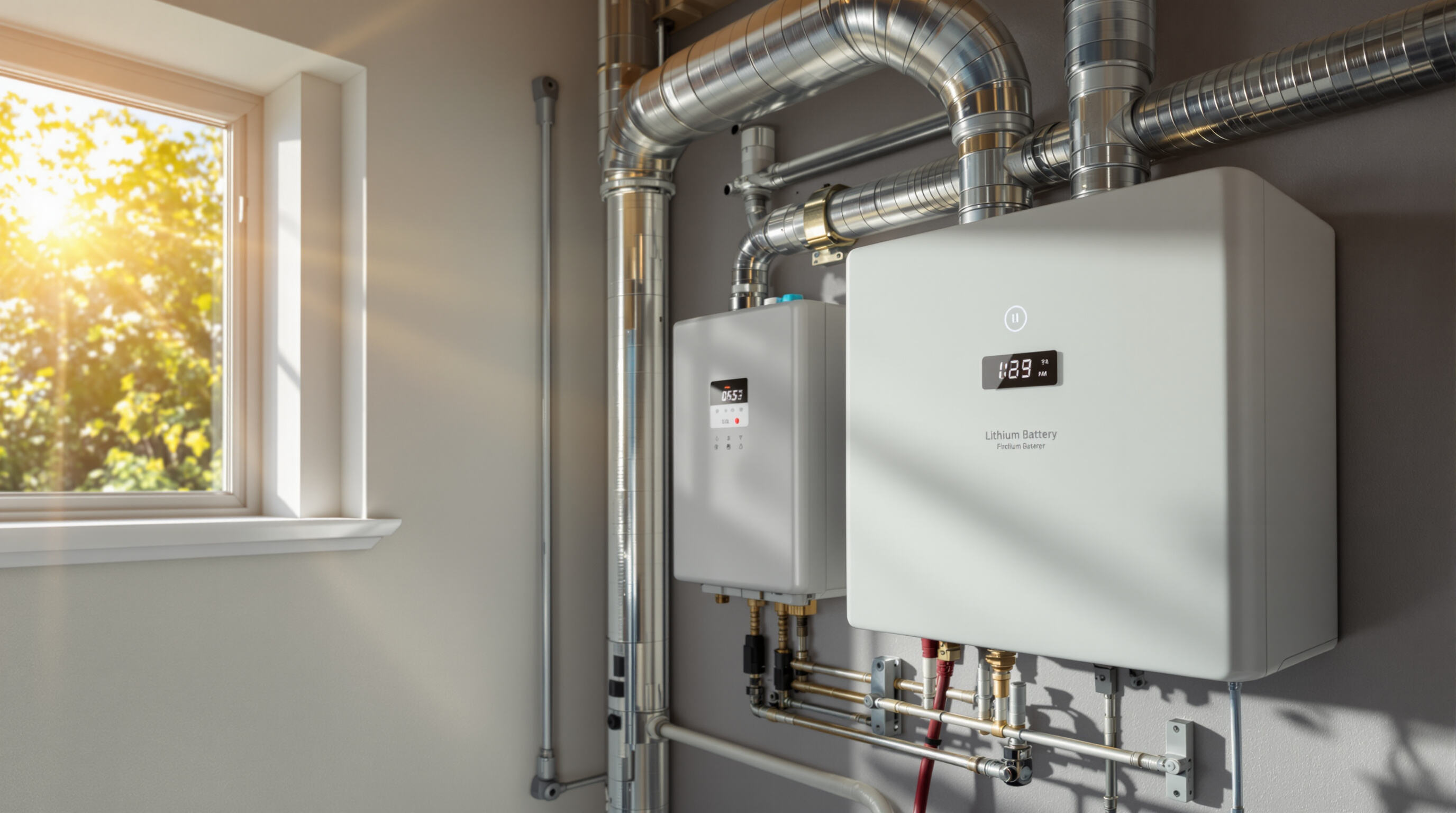Most central air conditioning systems run between 3 and 5 kilowatts when they're operating, but window mounted units generally need much less power, somewhere around half a kilowatt up to 1.5 kilowatts based on their size and how efficient they are built to be. Take for instance a standard sized central AC rated at 24,000 BTUs which usually pulls about 4 kW from the grid, compared to smaller window units with 12,000 BTUs that tend to draw approximately 1.2 kW according to Energy Star data from 2023. Understanding these basic electricity requirements becomes really important when figuring out what size backup batteries would work best for homes looking at alternative power solutions.
When air conditioners first kick on, they actually need about three times as much electricity compared to when they're running normally. Take a standard 4 kW central unit for instance it might spike all the way to 12 kW just to get that big compressor spinning from a standstill. Battery backup systems face a real challenge here because they have to handle these sudden power demands without letting voltages dip too low, which would cause everything to shut down unexpectedly. That's why even though inverters are often advertised as handling 10 kW continuously, many homeowners find them struggling when faced with those brief but intense 12 kW spikes from their 3-ton AC units during startup.
A battery system must provide both:
| AC Type | Runtime per 10kWh Battery | Minimum Inverter Rating |
|---|---|---|
| Central (4 kW) | 1.5–2.5 hours | 5 kW continuous |
| Window (1.2 kW) | 6–8 hours | 2 kW continuous |
Depth of discharge (DoD) limits reduce usable capacity—lithium-ion batteries typically allow 90% DoD, meaning a 10kWh unit delivers about 9kWh for AC loads.
According to a study published in Cleantechnica back in 2025 looking at homes built to withstand storms, a standard 10kWh solar battery setup can run a typical 3-ton air conditioner for maybe around an hour during power cuts if we're using smart load management techniques. Want longer runtime? Well folks generally need those batteries recharged through solar panels again or install extra battery packs to get things going for much longer periods. The bottom line here is matching our energy storage capacity to what kind of weather we actually face locally makes all the difference. For example, houses located in areas prone to frequent heatwaves probably should consider investing in something closer to 20kWh or even bigger systems just so they stay cool when temperatures spike unexpectedly.

When considering backup power options, most homeowners face a choice between protecting just the essentials or going all out for the whole house. The basic necessities like keeping food cold, maintaining comfortable temperatures, and having lights on generally need around 3 to 5 kilowatts worth of power. But if someone wants to run everything during an outage, including those big energy guzzlers like electric ranges and clothes dryers, then they'll need anywhere from three to five times more capacity than what's needed for essentials alone. According to various industry studies, roughly seven out of ten people end up choosing only partial backup systems because of the price tag and how efficient these smaller setups tend to be. Whole home solutions usually stay in the realm of places that experience extended power failures multiple days at a time.
Getting an accurate picture of electrical load means adding together the running watts and those extra startup watts from every important appliance. Take your central AC unit for instance it typically runs around 3.8 kilowatts but can spike up to nearly 11 kW when first turned on. Then there's the fridge which draws somewhere between 150 to 400 watts, plus those LED bulbs at about 10 watts apiece, not to mention the HVAC fan that ranges from 500 right up to 1,200 watts depending on conditions. When looking at actual power usage during outages, most homeowners find through their energy monitoring devices that heating and cooling systems alone take up roughly 40 to 60 percent of what gets consumed. This makes these systems by far the biggest consideration when planning for backup power solutions.
For 8–12 hours of resilience, a 15 kWh battery with load-shedding protocols can maintain limited AC operation alongside essentials. For 24+ hours of coverage, 25+ kWh is recommended, though ambient temperatures above 95°F may reduce effective capacity by 18–25%. Hybrid systems combining solar charging with grid-tied capabilities offer the most reliable multi-day cooling support.

Most lithium-ion house battery backup systems are rated for 90% DoD. Exceeding this accelerates degradation and shortens lifespan. A 10kWh battery therefore provides about 9kWh of usable energy during AC operation. Operating within recommended DoD limits extends battery life and ensures consistent performance during critical outages.
Inverters convert DC battery power to AC for appliances, typically operating at 92–97% efficiency under steady loads. However, during AC compressor startups—when demand spikes to 3x running wattage—efficiency can drop below 85%, increasing energy loss. These conversion inefficiencies reduce available runtime, especially in systems with frequent cycling.
Battery performance declines significantly in high heat. Electrochemical studies show capacity degrades 30% faster at 95°F compared to 77°F, precisely when cooling demand peaks. Active thermal management systems consume 5–15% of stored energy to maintain safe operating temperatures, further reducing usable capacity during summer outages.
Intelligent controllers optimize high-draw appliance operation by temporarily shedding non-essential loads during AC startup. Advanced algorithms maintain indoor temperatures within a 5°F range using strategic cooling cycles, reducing overall energy use. These systems can extend usable AC runtime by 35–50% compared to direct, uninterrupted operation.
Solar panels today are making a real difference when it comes to cutting down on air conditioner usage. Take a standard 3-ton AC system for instance it typically guzzles around 28 to 35 kilowatt hours each day when running flat out. Now imagine having a 4 kW solar setup that not only tops up a 10 kWh battery within just 2 to 3 hours of good sunlight but also keeps the AC going while the sun shines. Some interesting findings from recent studies indicate that combining photovoltaic thermal collectors with heat pump technology could slash cooling energy needs by nearly half according to Bilardo and colleagues back in 2020. Of course location matters quite a bit too. Systems installed in sunny Arizona tend to charge batteries about 80 percent quicker compared to similar setups in Michigan as noted by NREL researchers last year. These differences highlight why understanding local climate conditions remains so important for anyone looking to maximize their solar investment.
Grid-only charged batteries just won't cut it when keeping air conditioning running through long power outages. Take a standard 15kWh battery powering a typical 3-ton AC unit running half the time it's on - that setup will run dry in around six hours once the sun goes down. Things look much better with solar integration though. Systems that combine solar panels can stretch that same battery life out to somewhere between 15 and 20 hours because they get topped off during daylight hours. Standalone battery systems have another problem too. They lose about 12 to 18 percent of their energy every time the compressor kicks in due to those constant DC to AC conversions. According to some recent grid resilience research, these losses make standalone systems roughly 23 percent less efficient compared to hybrid solar setups right when we need cooling most in summer months. The Ponemon Institute study from last year backs this up pretty clearly.
Getting double the battery power for only 2 to 3 hours of air conditioning isn't really worth the money most of the time. Take a look at these numbers: installing a 20kWh battery that runs cooling for 4 hours will set someone back around $14k to $18k. That's almost 92% more expensive than going with a standard 10kWh system ready for solar integration. Sure, bigger batteries work okay during short power cuts now and then, but there's another option worth considering. Systems combining regular batteries with 5 to 7kW solar panels actually provide about six times as many cooling cycles per year for roughly the same price tag. The new thermal storage technologies are definitely interesting stuff, but they're still probably 3 to 5 years away from becoming common across the board according to what experts are saying right now.
When it comes to keeping the lights on during outages, standby generators just keep going and going. Take a 10kW model for instance it can power a central air conditioning system nonstop as long as there's fuel available. Compare that to a 10kWh battery paired with a 5kW inverter which struggles to maintain a 3-ton AC unit for much longer than 2 to 3 hours because of those pesky inverter limitations and the sudden power spikes when appliances start up. The real difference shows up when multiple big appliances need to turn on at once. Generators simply handle these situations far better, which is why they remain the preferred choice for comprehensive home backup solutions despite their higher initial cost.
Battery systems operate silently and emit no pollutants, ideal for short outages (<;12 hours) and solar-powered homes. However, 72-hour blackouts favor generators, which store vastly more energy—1 gallon of propane provides ~27 kWh. Some hybrid setups use batteries for daily resilience and generators as backup for prolonged outages.
| Factor | Standby Generator | House Battery Backup |
|---|---|---|
| Runtime | Unlimited (with fuel) | 8–12 hours (10kWh system) |
| Noise Level | 60–70 dB | <30 dB |
| CO Emissions | 120–200 lbs/day | 0 lbs/day (solar-charged) |
Generators cost $4,000–$12,000 installed and incur $800+/year in fuel and maintenance (Ponemon 2023). Battery systems ($15,000–$25,000) have higher upfront costs but lower operating expenses, especially with solar. Over 10 years, lithium batteries become 20–40% cheaper in areas with frequent outages, particularly when factoring in tax credits and avoided fuel costs.
Central air conditioning units typically operate between 3 and 5 kW, while smaller window units use about 0.5 to 1.5 kW depending on size and efficiency.
During startup, air conditioners require three times more power than during regular operation. Backup systems must handle these spikes to prevent voltage dips.
Solar integration enhances battery performance, extending runtime by replenishing energy during sunny periods compared to standalone systems.
Batteries are silent and emission-free for short outages, while generators offer unlimited runtime with fuel, favoring longer blackouts.